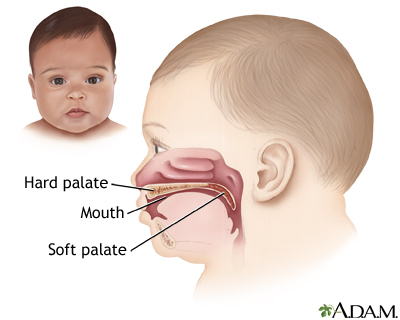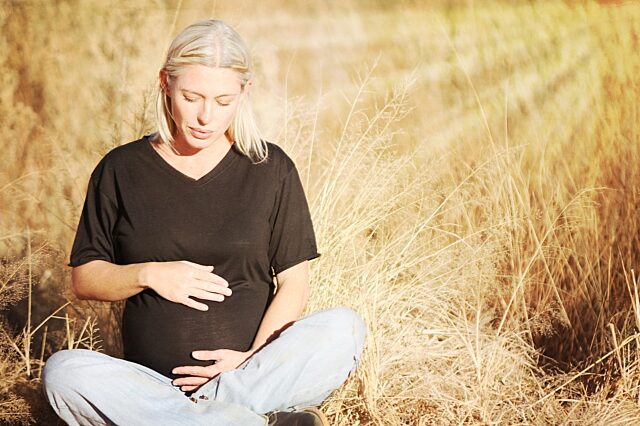With You Every Step of the Way: Continuity of Care for Cleft and Craniofacial Patients
Each year, one in 700 children is born with cleft and craniofacial differences. These can result from abnormal growth patterns of the face or skull, which…

Update your location to show providers, locations, and services closest to you.
Cleft lip and cleft palate repair is surgery to fix birth defects of the upper lip and palate (roof of the mouth).
Orofacial cleft; Craniofacial birth defect repair; Cheiloplasty; Cleft rhinoplasty; Palatoplasty; Tip rhinoplasty
A cleft lip is a birth defect:
Most times, cleft lip repair is done when the child is 3 to 6 months old.
For cleft lip surgery, your child will have general anesthesia (asleep and not feeling pain). The surgeon will trim the tissues and sew the lip together. The stitches will be very small so that the scar is as small as possible. Most of the stitches will be absorbed into the tissue as the scar heals, so they will not have to be removed later.
Most times, cleft palate repair is done when the child is older, between 9 months and 1 year old. This allows the palate to change as the baby grows. Doing the repair when the child is this age will help prevent further speech problems as the child develops.
In cleft palate repair, your child will have general anesthesia (asleep and not feeling pain). Tissue from the roof of the mouth may be moved over to cover the soft palate. Sometimes a child will need more than one surgery to close the palate.
During these procedures, the surgeon may also need to repair the tip of your child's nose. This surgery is called rhinoplasty.
This type of surgery is done to correct a physical defect caused by a cleft lip or cleft palate. It is important to correct these conditions as they can cause problems with nursing, feeding, or speech.
Risks from any surgery include:
Problems these surgeries may cause are:
You will meet with a speech therapist or feeding therapist soon after your child is born. The therapist will help you find the best way to feed your child before the surgery. Your child must gain weight and be healthy before surgery.
Your child's health care provider may:
Always tell your child's provider:
During the days before the surgery:
On the day of the surgery:
Most times, your child will not be able to drink or eat anything for several hours before the surgery.
Your child will probably be in the hospital for 5 to 7 days right after surgery. Complete recovery can take up to 4 weeks.
The surgery wound must be kept very clean as it heals. It must not be stretched or have any pressure put on it for 3 to 4 weeks. Your child's nurse should show you how to take care of the wound. You will need to clean it with soap and water or a special cleaning liquid, and keep it moist with ointment.
Until the wound heals, your child will be on a liquid diet. Your child will probably have to wear arm cuffs or splints to prevent picking at the wound. It is important for your child not to put hands or toys in their mouth.
Most babies heal without problems. How your child will look after healing often depends on how serious the defect was. Your child might need another surgery to fix the scar from the surgery wound.
A child who had a cleft palate repair may need to see a dentist or orthodontist. The teeth may need correcting as they come in.
Hearing problems are common in children with cleft lip or cleft palate. Your child should have a hearing test early on, and it should be repeated over time.
Your child may still have problems with speech after the surgery. This is caused by muscle problems in the palate. Speech therapy will help your child.

Allen GC. Cleft lip and palate. In: Scholes MA, Ramakrishnan VR, eds. ENT Secrets. 4th ed. Philadelphia, PA: Elsevier; 2016:chap 51.
Costello BJ, Ruiz RL. Comprehensive management of facial clefts. In: Fonseca RJ, ed. Oral and Maxillofacial Surgery. 3rd ed. Philadelphia, PA: Elsevier; 2018:chap 28.
Wang TD, Milczuk HA. Cleft lip and palate. In: Flint PW, Francis HW, Haughey BH, et al, eds. Cummings Otolaryngology: Head and Neck Surgery. 7th ed. Philadelphia, PA: Elsevier; 2021:chap 188.


Each year, one in 700 children is born with cleft and craniofacial differences. These can result from abnormal growth patterns of the face or skull, which…

January is National Birth Defects awareness month. Birth defects affect roughly every 1 in 33 born in the United States each year. Some birth defects are…
